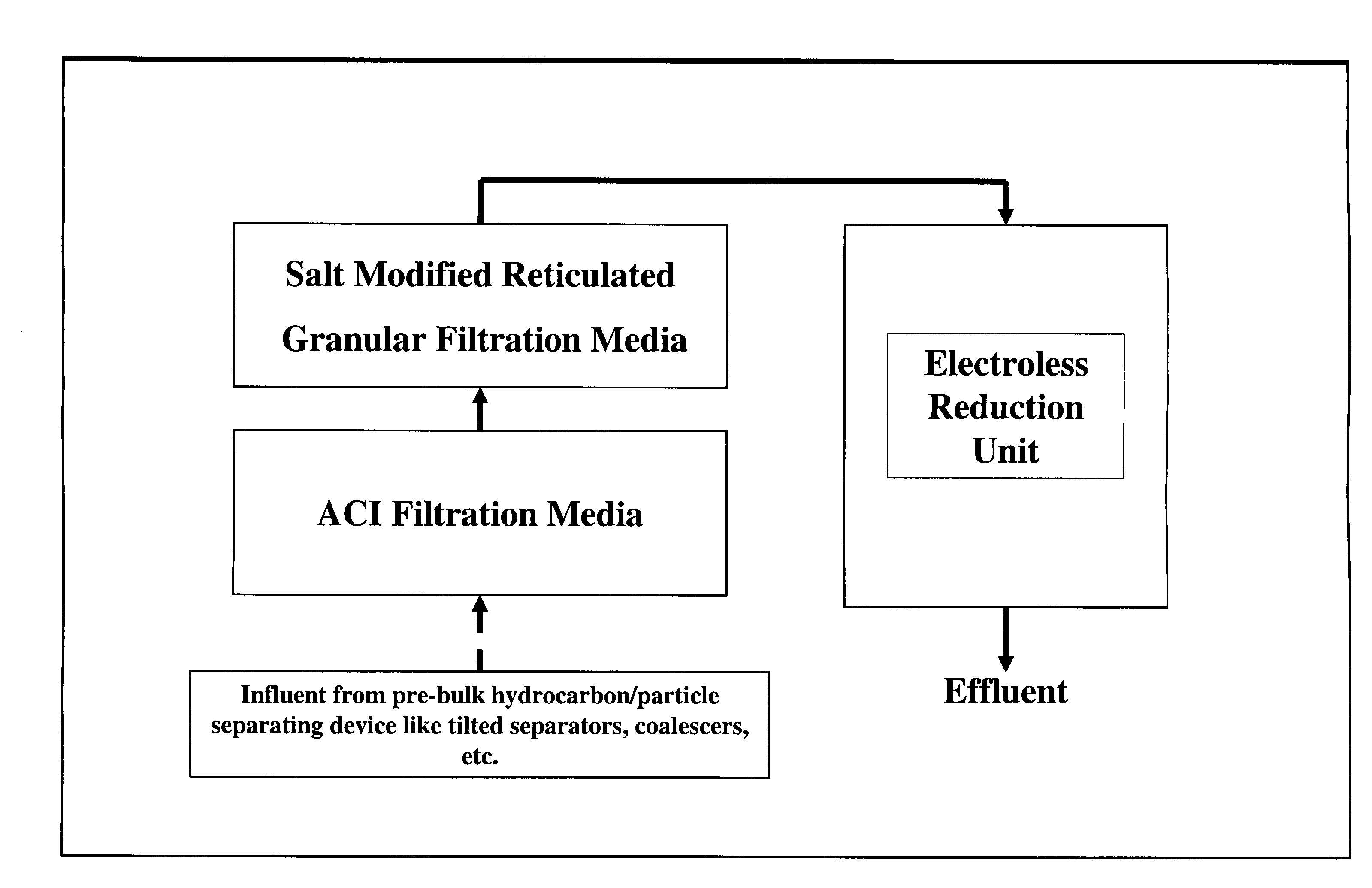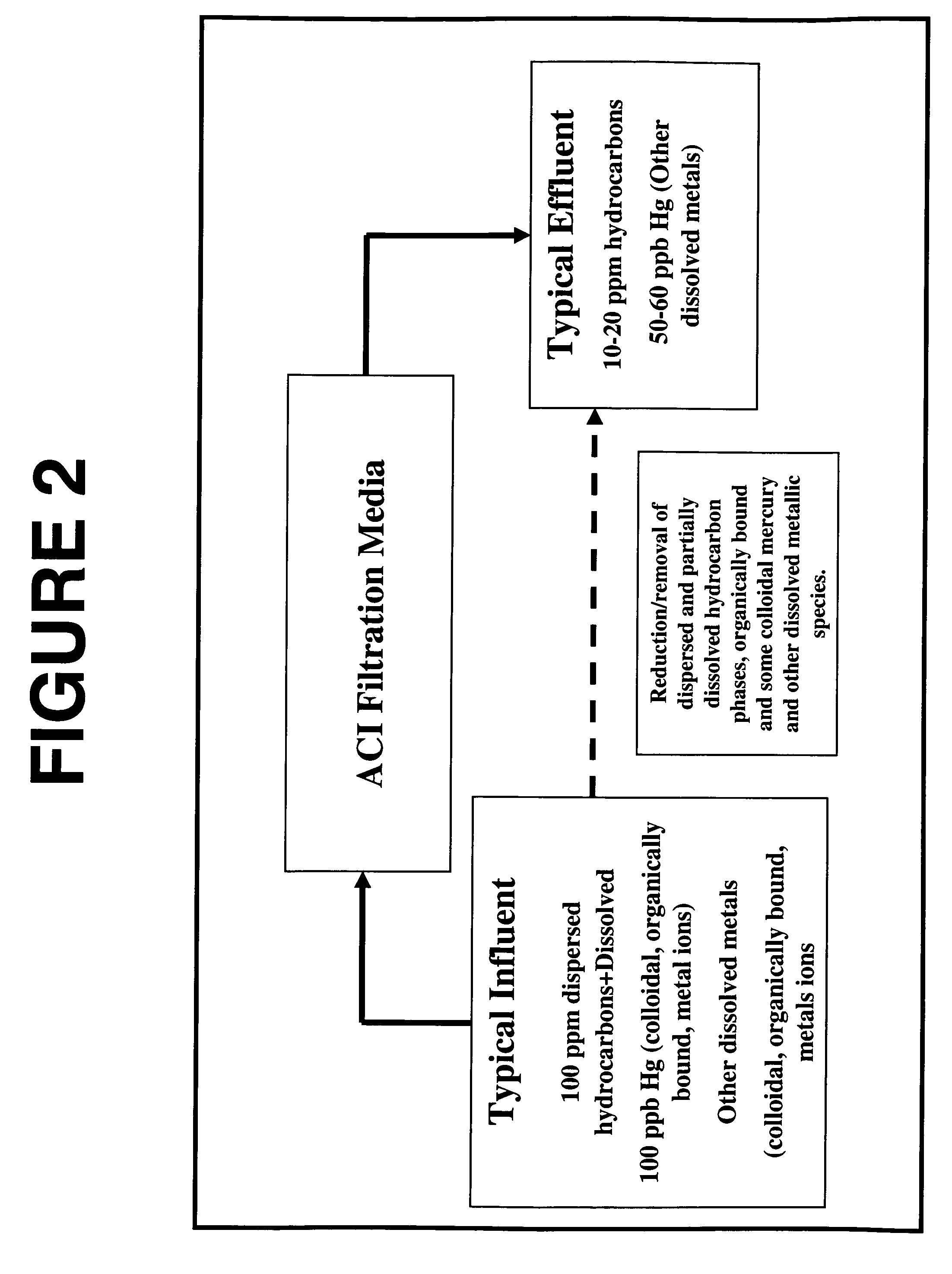Process for removal of contaminants from industrial streams
a technology for industrial streams and contaminants, applied in water treatment multi-stage treatments, separation processes, instruments, etc., can solve the problems of difficult to remove or reduce contaminants to levels, reach very serious dimensions, and difficult to remove compounds from aqueous media
- Summary
- Abstract
- Description
- Claims
- Application Information
AI Technical Summary
Benefits of technology
Problems solved by technology
Method used
Image
Examples
examples i and ii
[0035]Two samples of produced water were treated in the filtration system of the present invention. The samples were subjected to analysis as raw inputs and after being subjected to the method of the invention, i.e. to filtration by successive treatment at all three stages of the system of FIG. 1. For comparison the samples were also analyzed after filtration using various combinations of the stages of the present filtration system. In all instances the analysis were conducted using EPA method 1664. The results of these tests are shown in the below Table. The marked reductions in all of the contaminants will be evident. Particularly to be noted is the vast reduction in mercury, including the extremely effective action of stage 2 and the further polishing effect achieved after passing through stage 3, i.e. the electroless reduction stage. Note too here that where the electroless reduction stage is used alone the mercury reduction is very small, and thus it will be evident from this a...
PUM
| Property | Measurement | Unit |
|---|---|---|
| metallic | aaaaa | aaaaa |
| concentrations | aaaaa | aaaaa |
| soluble | aaaaa | aaaaa |
Abstract
Description
Claims
Application Information
 Login to View More
Login to View More - R&D
- Intellectual Property
- Life Sciences
- Materials
- Tech Scout
- Unparalleled Data Quality
- Higher Quality Content
- 60% Fewer Hallucinations
Browse by: Latest US Patents, China's latest patents, Technical Efficacy Thesaurus, Application Domain, Technology Topic, Popular Technical Reports.
© 2025 PatSnap. All rights reserved.Legal|Privacy policy|Modern Slavery Act Transparency Statement|Sitemap|About US| Contact US: help@patsnap.com



